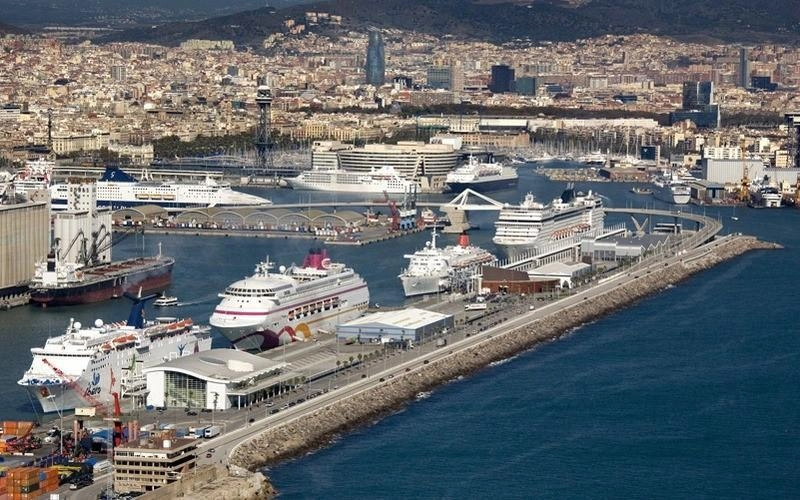
Barcelona Implements Port Capacity Limits to Combat Overtourism
The city of Barcelona, Spain, is implementing significant changes to its cruise port operations to address concerns over overtourism and urban stress. By 2030, the number of cruise terminals will be reduced from seven to five as part of an initiative aimed at better managing tourism.
This decision comes in light of a 20% increase in cruise tourists from 2018 to 2024, alongside a 21% rise in ship visits and a further 20% increase in passengers during the first half of 2025. As part of the new agreement between the Barcelona City Council and the Port Authority, three old terminals—A, B, and C on the Adossat wharf—will be demolished. A new, modern terminal will be constructed where Terminal C currently stands, designed to accommodate 7,000 passengers and cater to homeport itineraries and smaller ships. This restructuring seeks to lower the maximum daily passenger capacity of the port from 37,000 to 31,000, which represents a 16% reduction.
Funding for this ambitious project includes a EUR 185 million public–private investment, which encompasses a EUR 50 million renovation of a 610-meter section of the wharf and enhancements to support onshore power supply (OPS). This upgrade aims to reduce emissions from vessels docked at the port. Additional infrastructure improvements will create a new pedestrian and cycling corridor beneath Montjuïc and entail a EUR 90 million upgrade to the Porta d’Europa bridge.
Barcelona’s Mayor Jaume Collboni hailed the initiative as the first legal limitation on cruise expansion in the city, expressing gratitude to the Port for acknowledging the need for a controlled approach to tourism. He underscored the importance of balancing tourism management with planning.
Nonetheless, José Antonio Donaire, the city’s Commissioner for Sustainable Tourism, cautioned that visible improvements may not be seen until the completion of the project in 2030, and that passenger numbers could surpass 2024 levels in the meantime.
Cruise tourism is a significant economic contributor for Barcelona, generating approximately EUR 1 billion in annual revenues and EUR 562 million towards Catalonia’s GDP. On average, cruise passengers spend EUR 230 per day, which is considerably higher than the spending of typical tourists. City officials are optimistic that a more structured cruise model can sustain these economic benefits while mitigating the local impact of tourism.
Set sail on a voyage of discovery with CruiseShip.net – your ultimate destination for all things cruising! Explore the latest news, insightful reviews, and thrilling cruising adventures from around the globe. Whether you’re a seasoned cruiser or a first-time traveler, CruiseShip.net is your go-to source for expert advice, insider tips, and inspiring stories to fuel your wanderlust. Embark on a journey like no other with CruiseShip.net – where every wave brings new excitement and endless possibilities on the high seas.



Leave a Reply